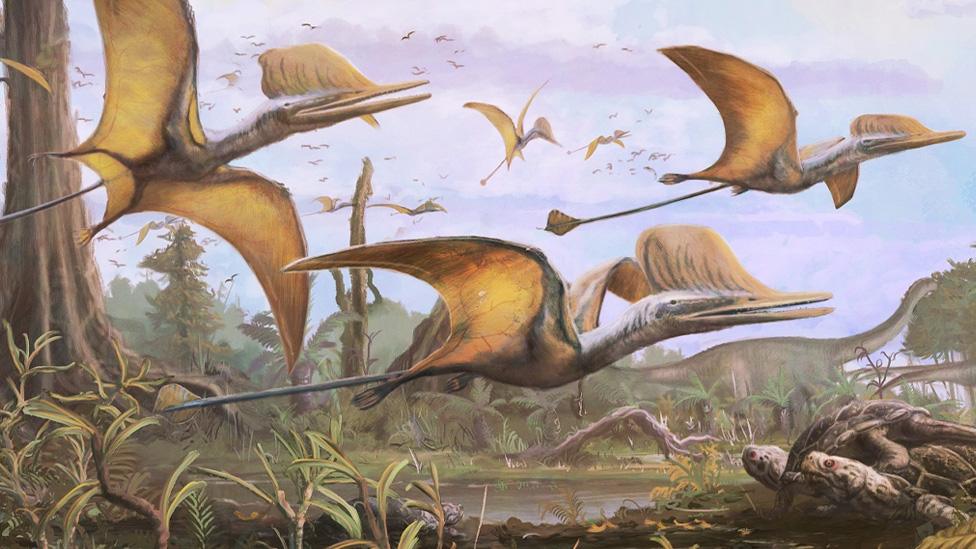Fossil found on Skye is new species of fanged Jurassic reptile
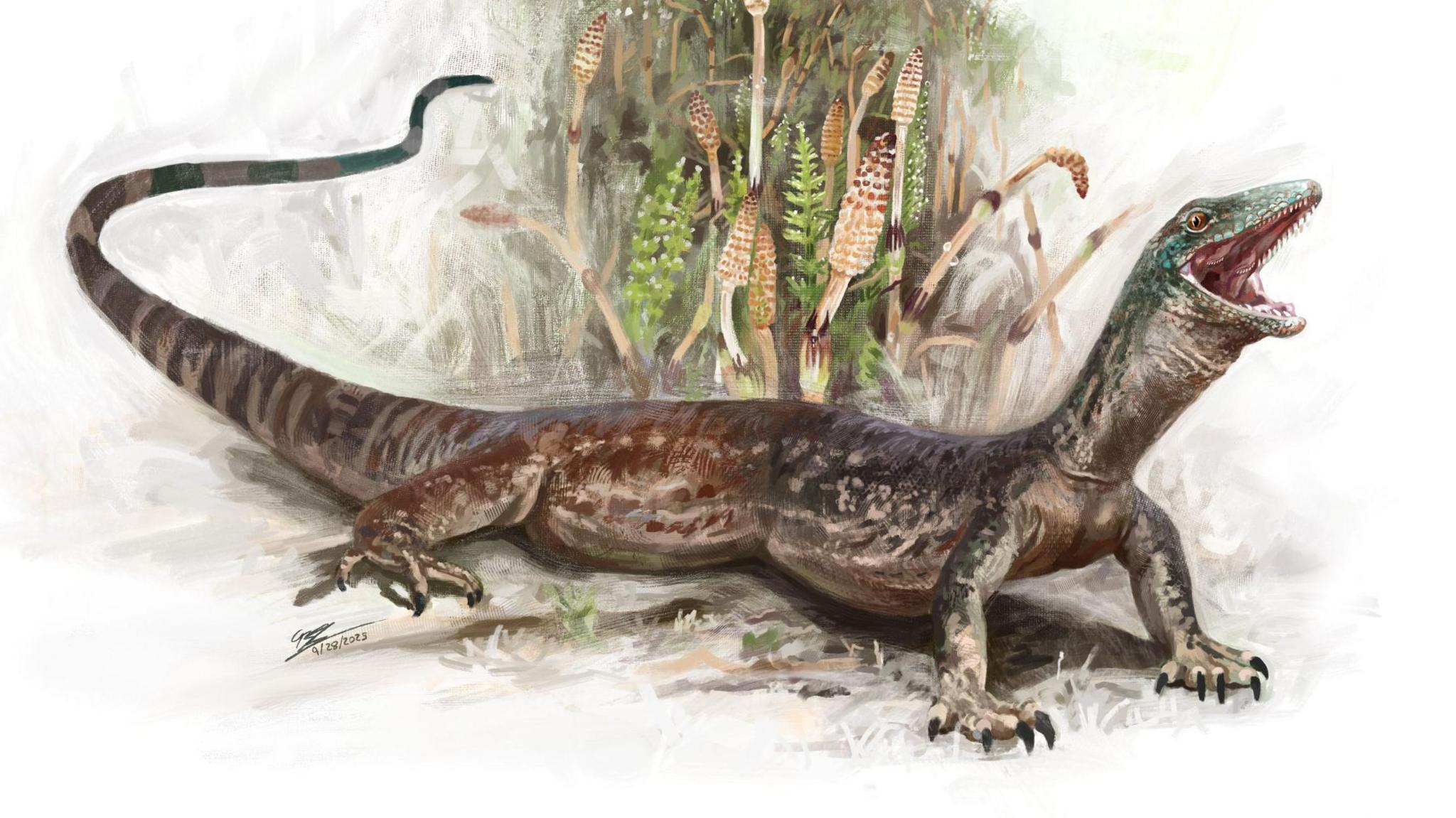
The reptile has been given a Gaelic name
- Published
The fossil of a previously unknown reptile that had snake-like fangs and lived about 167 million years ago has been discovered on Skye.
Experts said their research had revealed it to be a new species and family of Jurassic animals linked to the origins of lizards and snakes.
It has been given the Gaelic name Breugnathair elgolensis, meaning "false snake of Elgol", in a nod to the area of southern Skye where it was discovered.
The fossil is among the oldest and most complete Jurassic lizards known to science.
Details of the discovery have been published in the scientific journal Nature, external.
Pony-sized dinosaur revealed 52 years after discovery
- Published6 March
Dinosaur Island: 40 years of discoveries on Skye
- Published10 February 2024
An international team of researchers led by the American Museum of Natural History - and including National Museums Scotland - examined the fossil.
The experts said Breugnathair had snake-like jaws and teeth that curved backwards similar to those of modern-day pythons.
Unlike living snakes, it had the proportions and limbs of a lizard.
The researchers said Breugnathair could provide further evidence of the lizard-like ancestors of snakes.
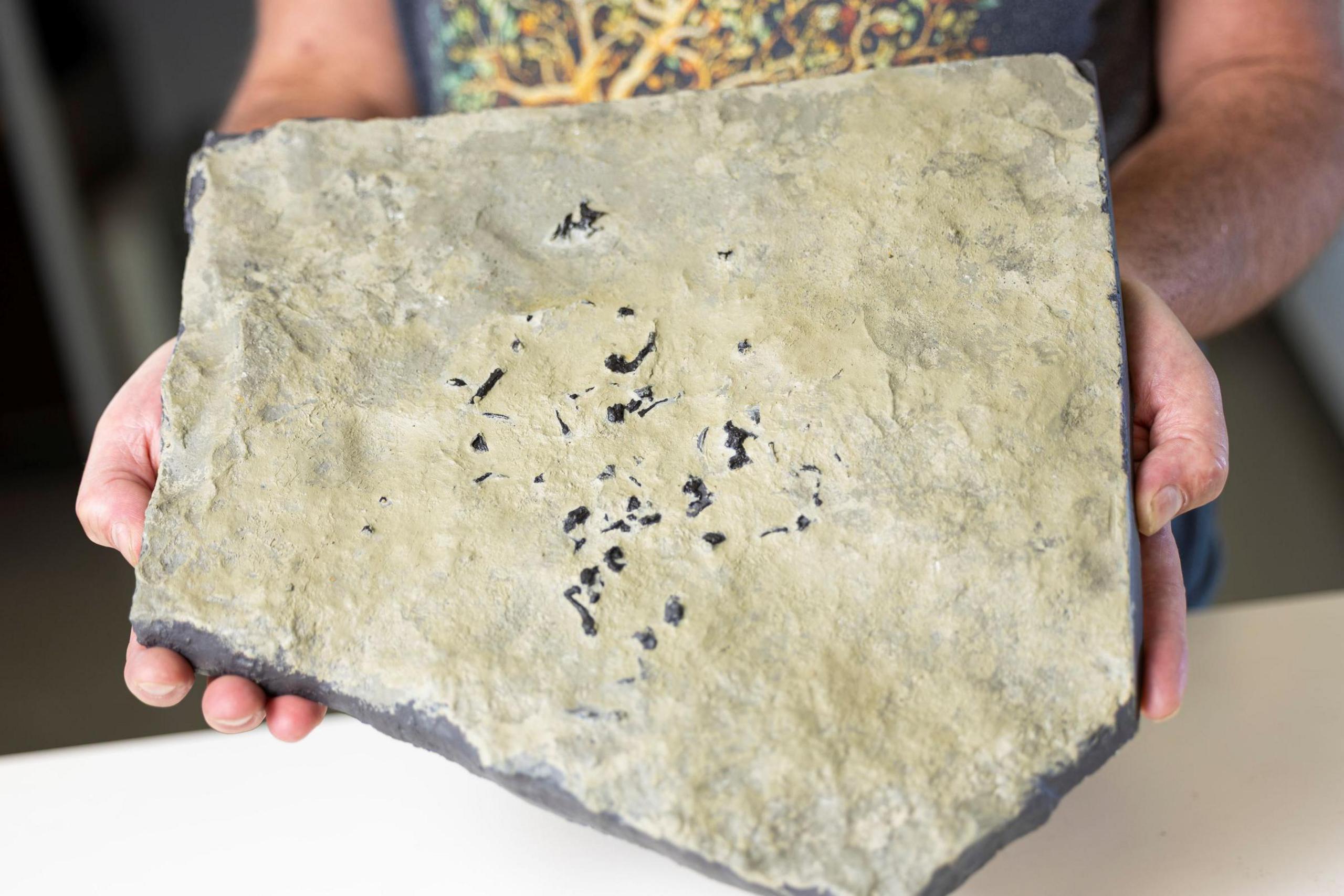
A cast of the fossil of Breugnathair elgolensis
Lead author Dr Roger Benson, curator of palaeontology at the American Museum of Natural History, said: "Snakes are remarkable animals that evolved long, limbless bodies from lizard-like ancestors.
"Breugnathair has snake-like feature of the teeth and jaws, but in other ways is surprisingly primitive.
"This might be telling us that snake ancestors were very different to what we expected, or it could instead be evidence for evolution of predatory habits in a primitive, extinct group."
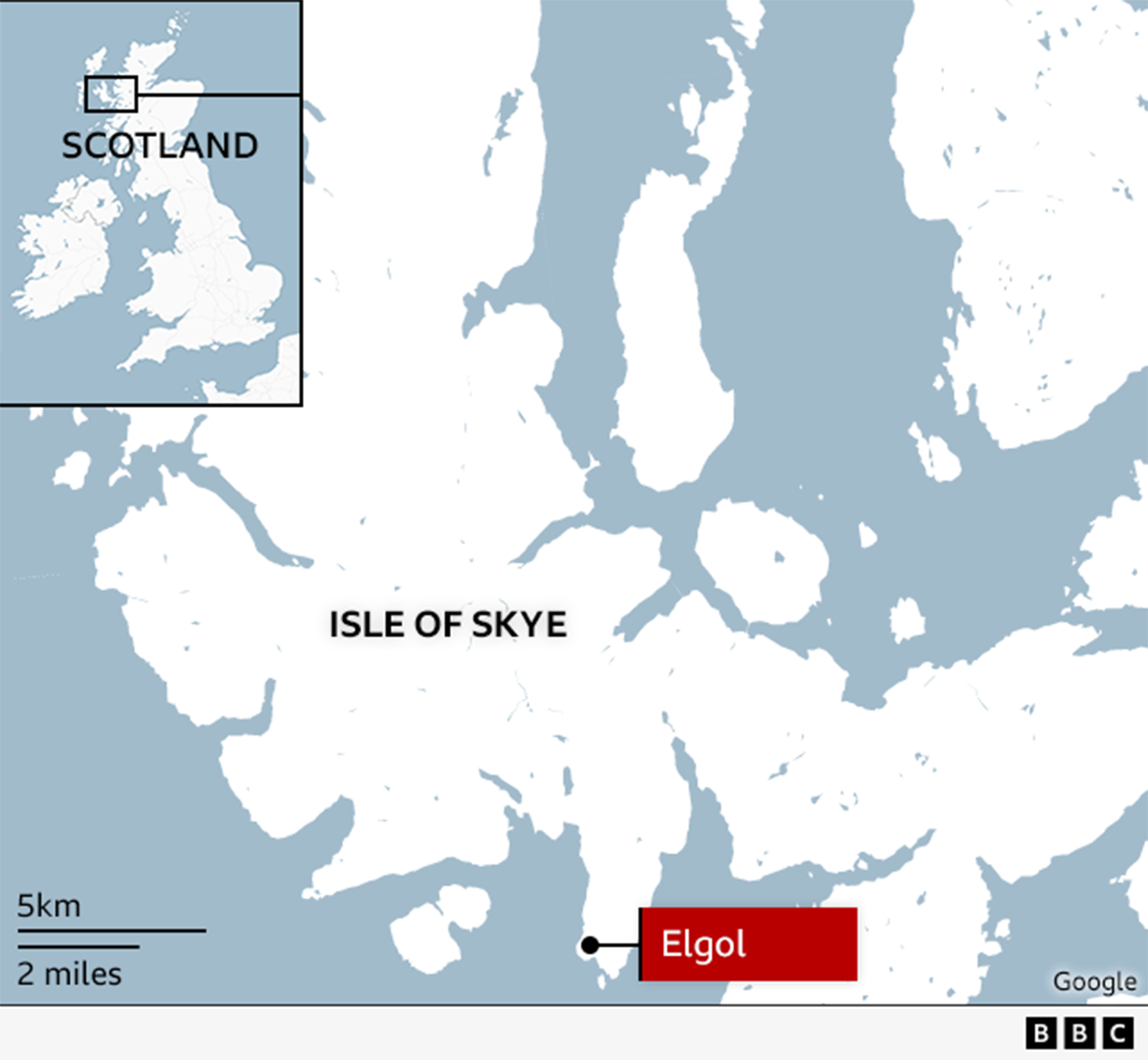
The fossil was discovered near Elgol by National Museums Scotland curator Dr Stig Walsh, and is now part of the museum's collection.
Dr Walsh said: "The Isle of Skye is one of the most important Middle Jurassic sites in the world.
"Breugnathair elgolensis is a remarkable addition to the fossil record, helping to rewrite our understanding of the evolution of snakes and lizards.
"We're delighted to add it to the other amazing finds in the National Collection that were discovered in Skye, truly Scotland's Jurassic Isle."
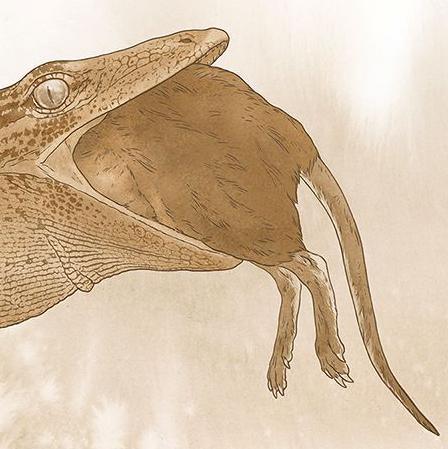
An illustration of the new Jurassic reptile eating prey
Researchers from the University of Cambridge, University of the Witwatersrand in Johannesburg, and University College London (UCL) were also involved.
The fossil was also analysed using high-power X-rays by the European Synchrotron Radiation Facility in Grenoble in France.
UCL's Prof Susan Evans, who co-led the study, said: "The Jurassic fossil deposits on the Isle of Skye are of world importance for our understanding of the early evolution of many living groups, including lizards which were beginning their diversification at around this time."
Related topics
- Published24 July 2024
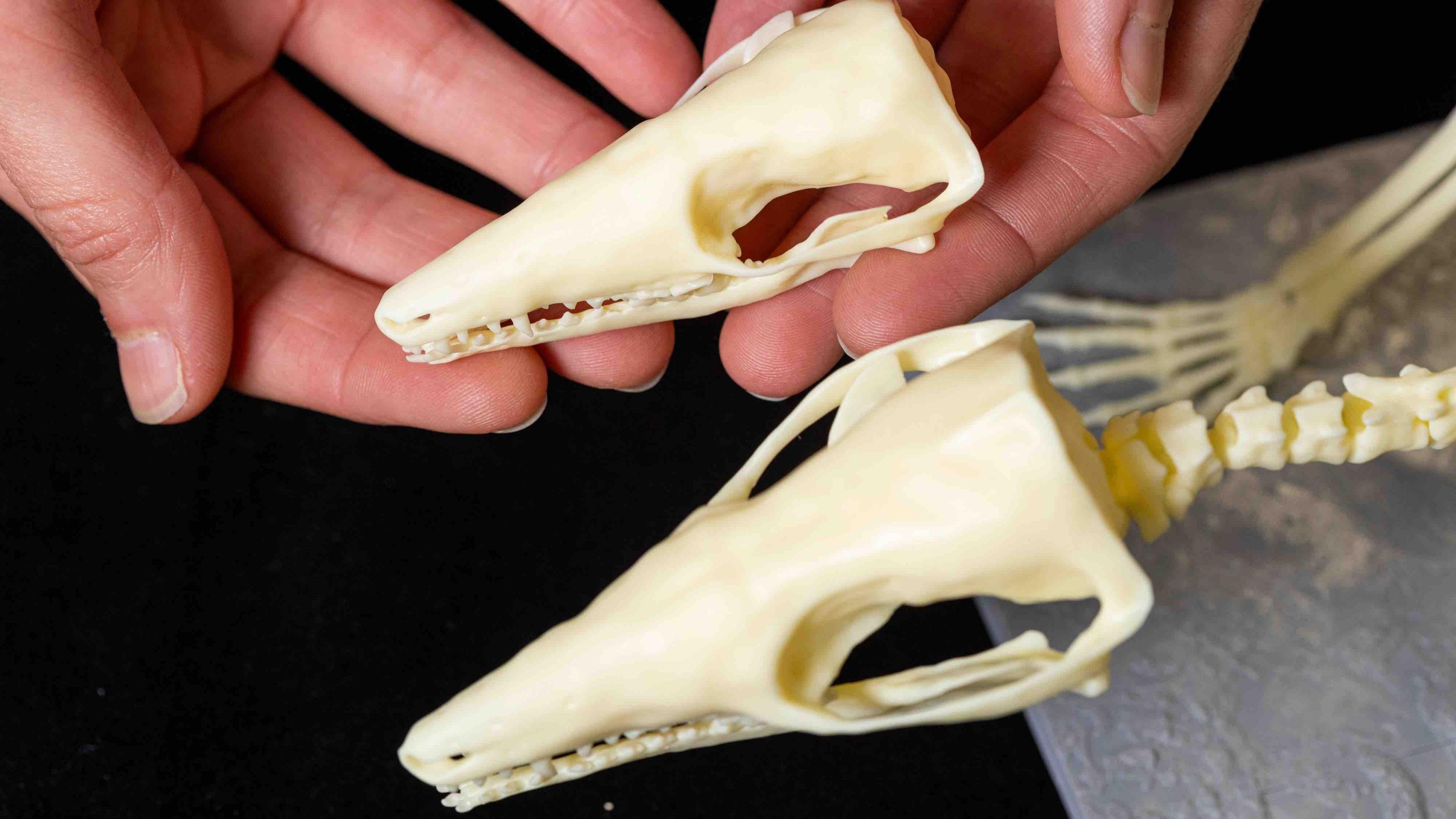
- Published6 February 2024
